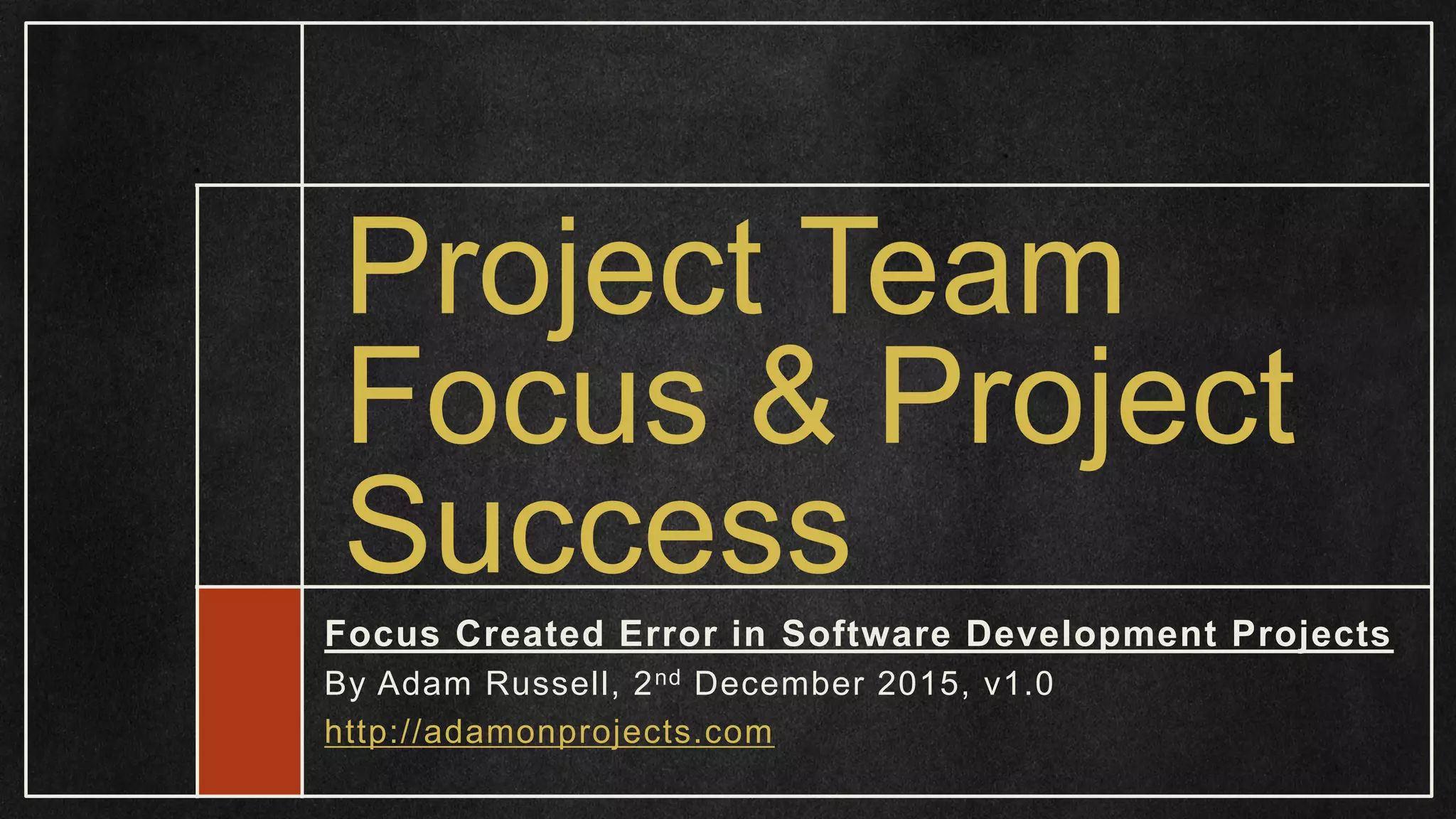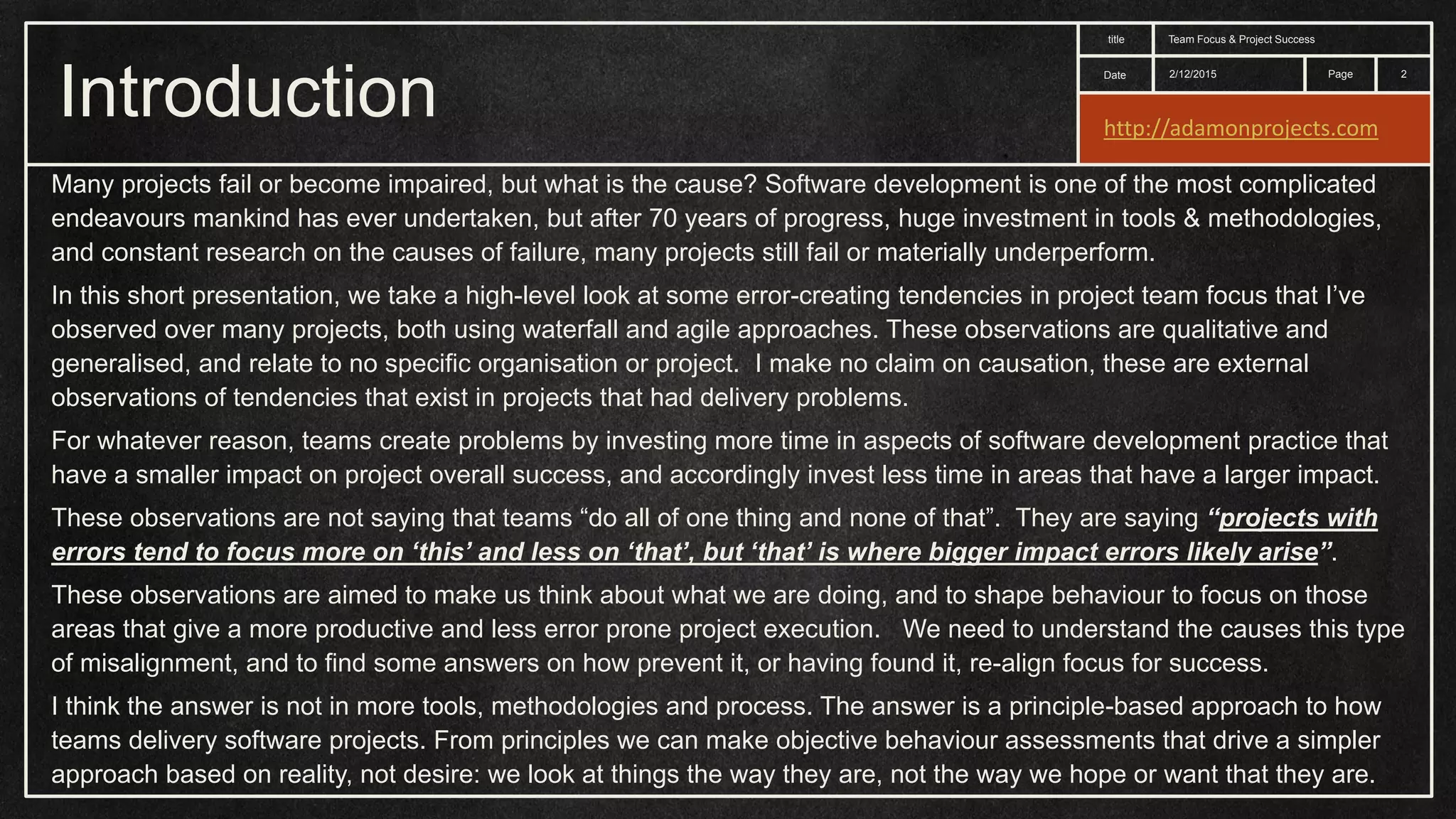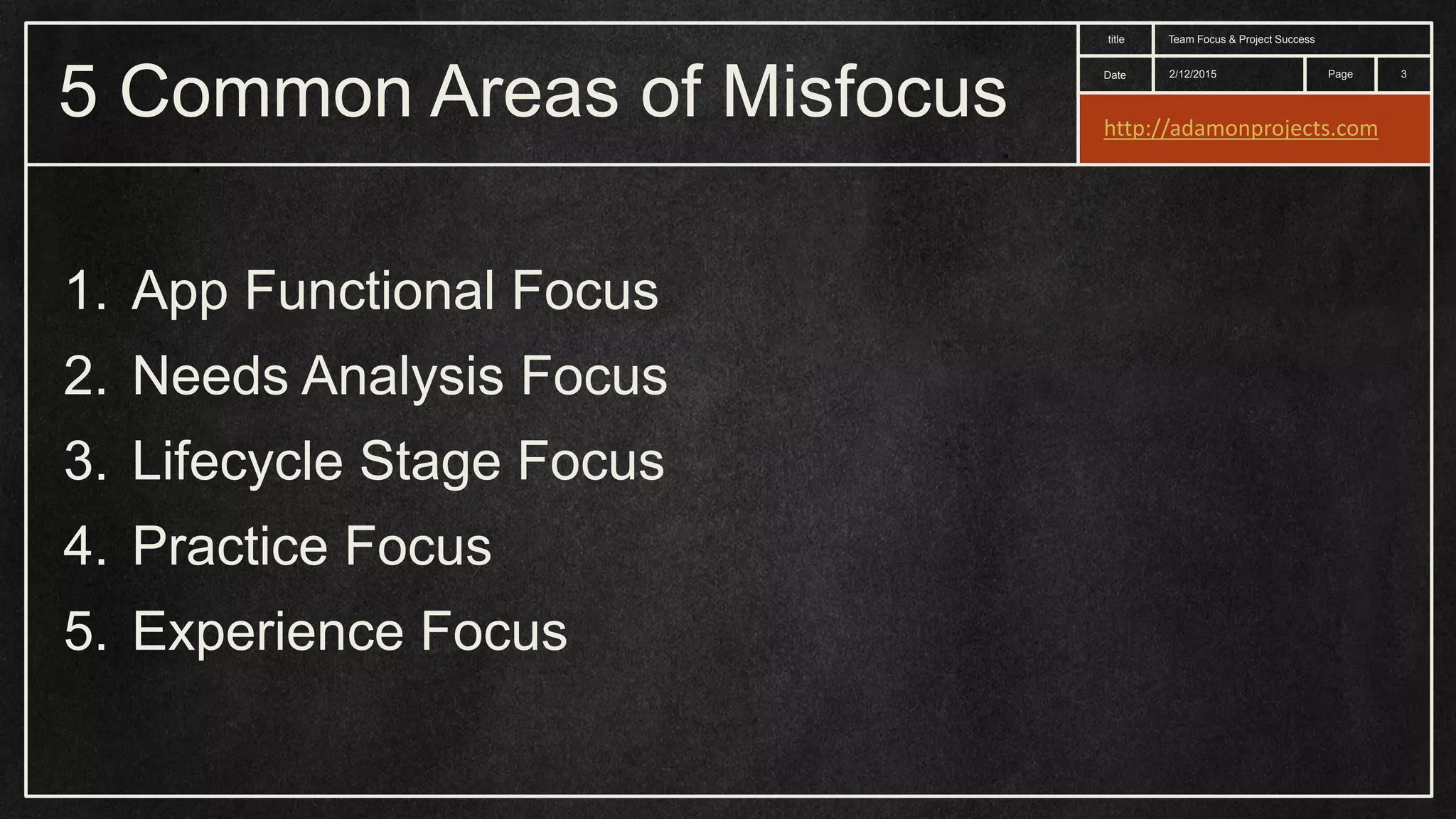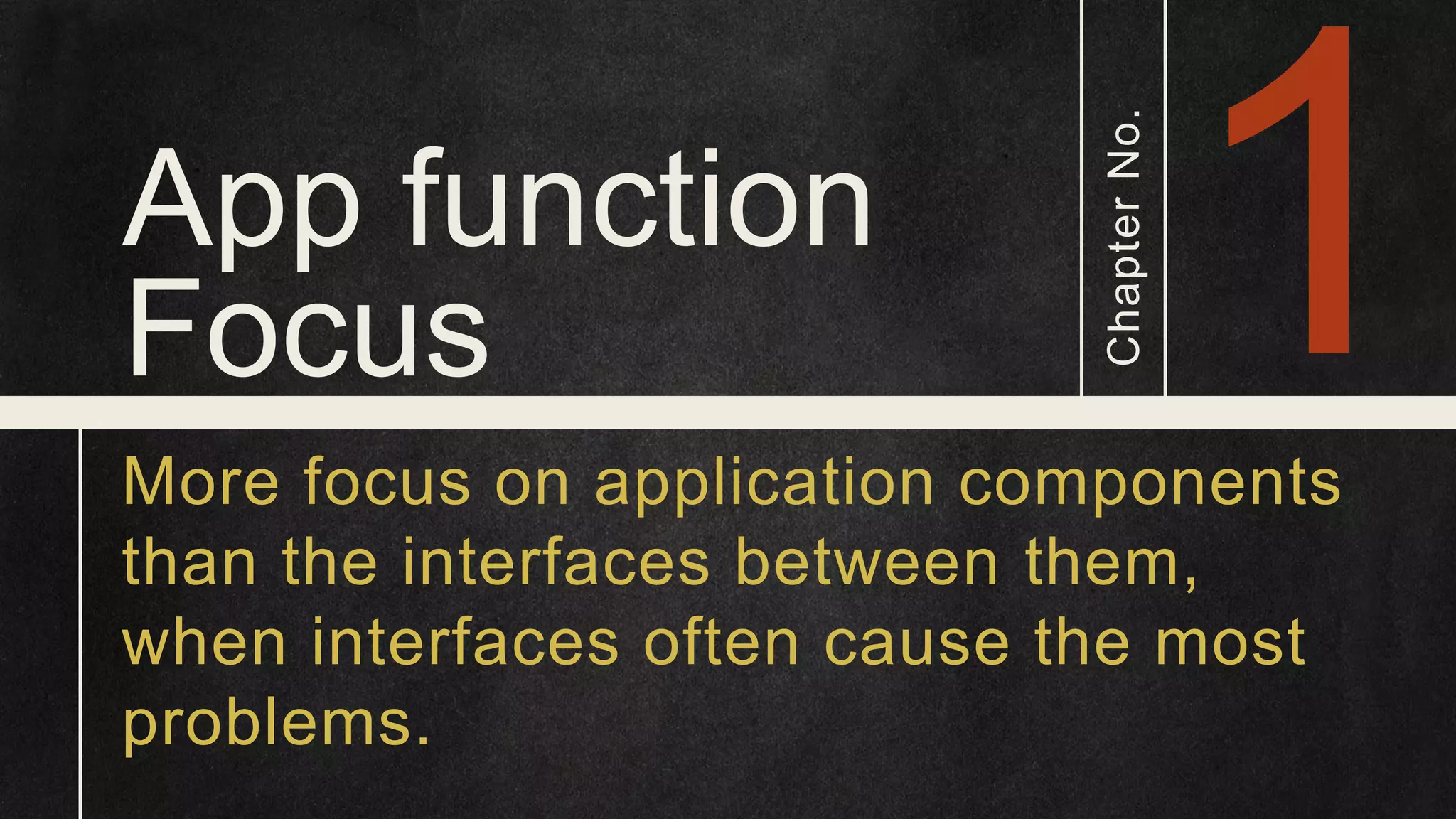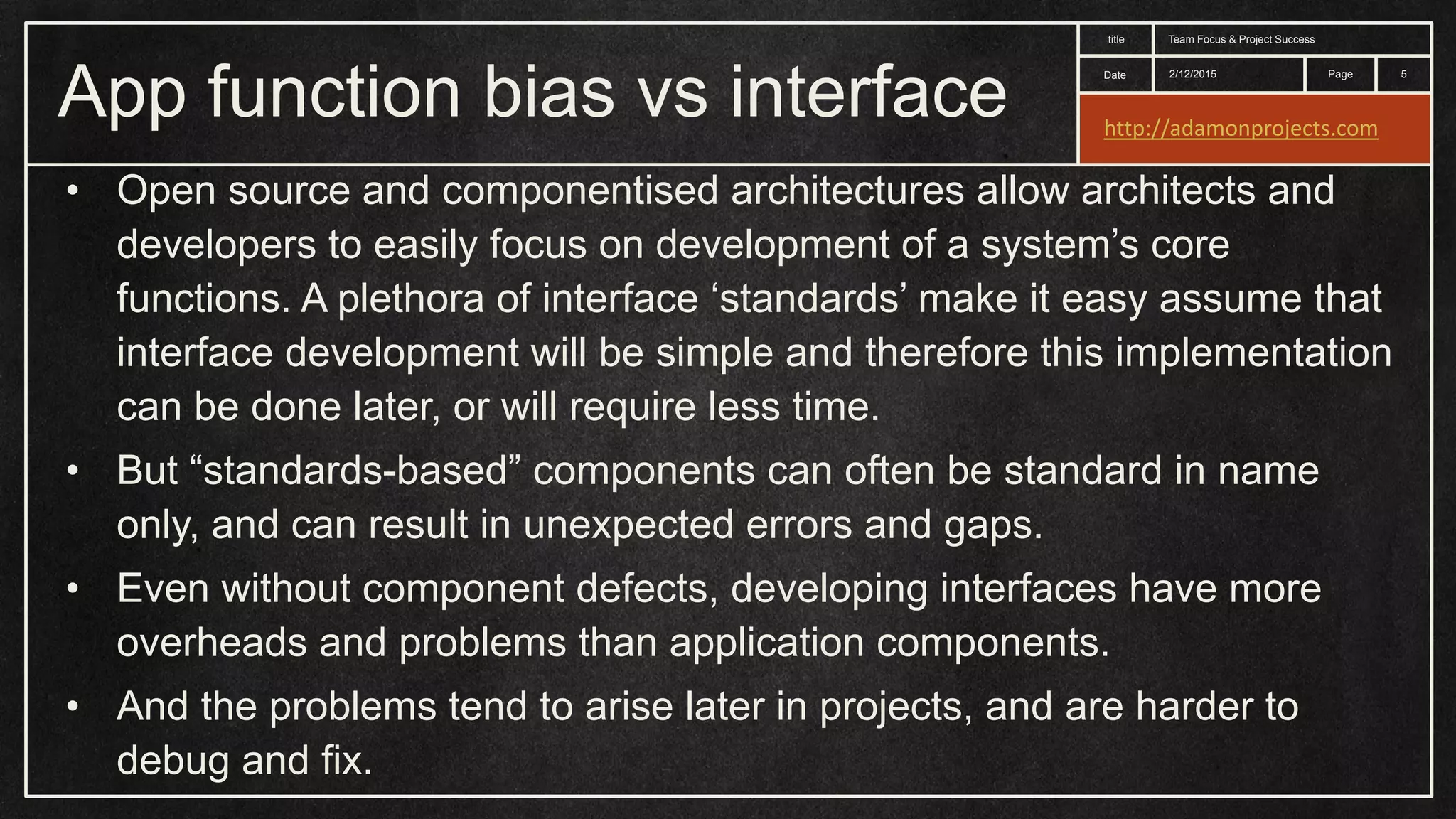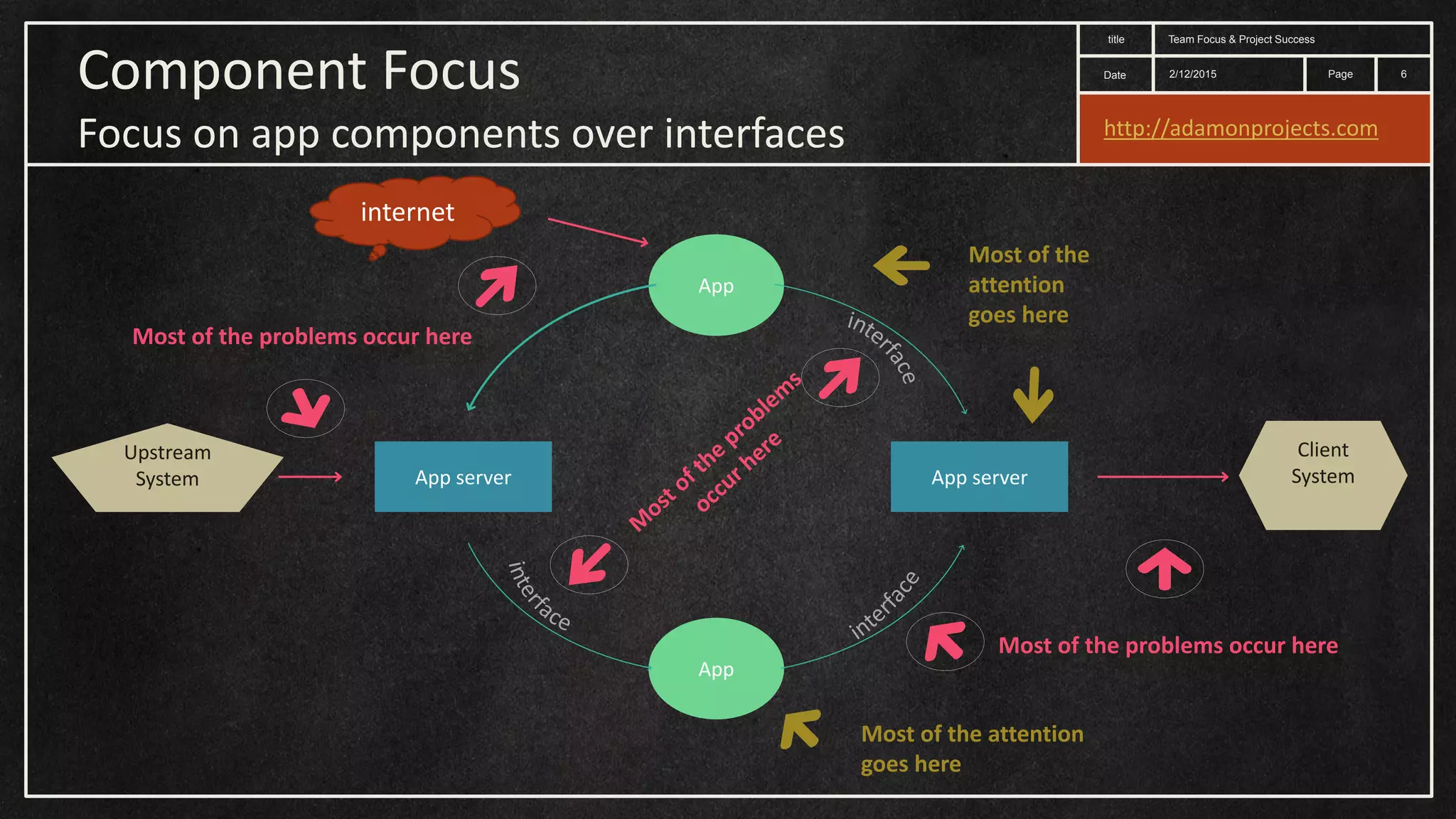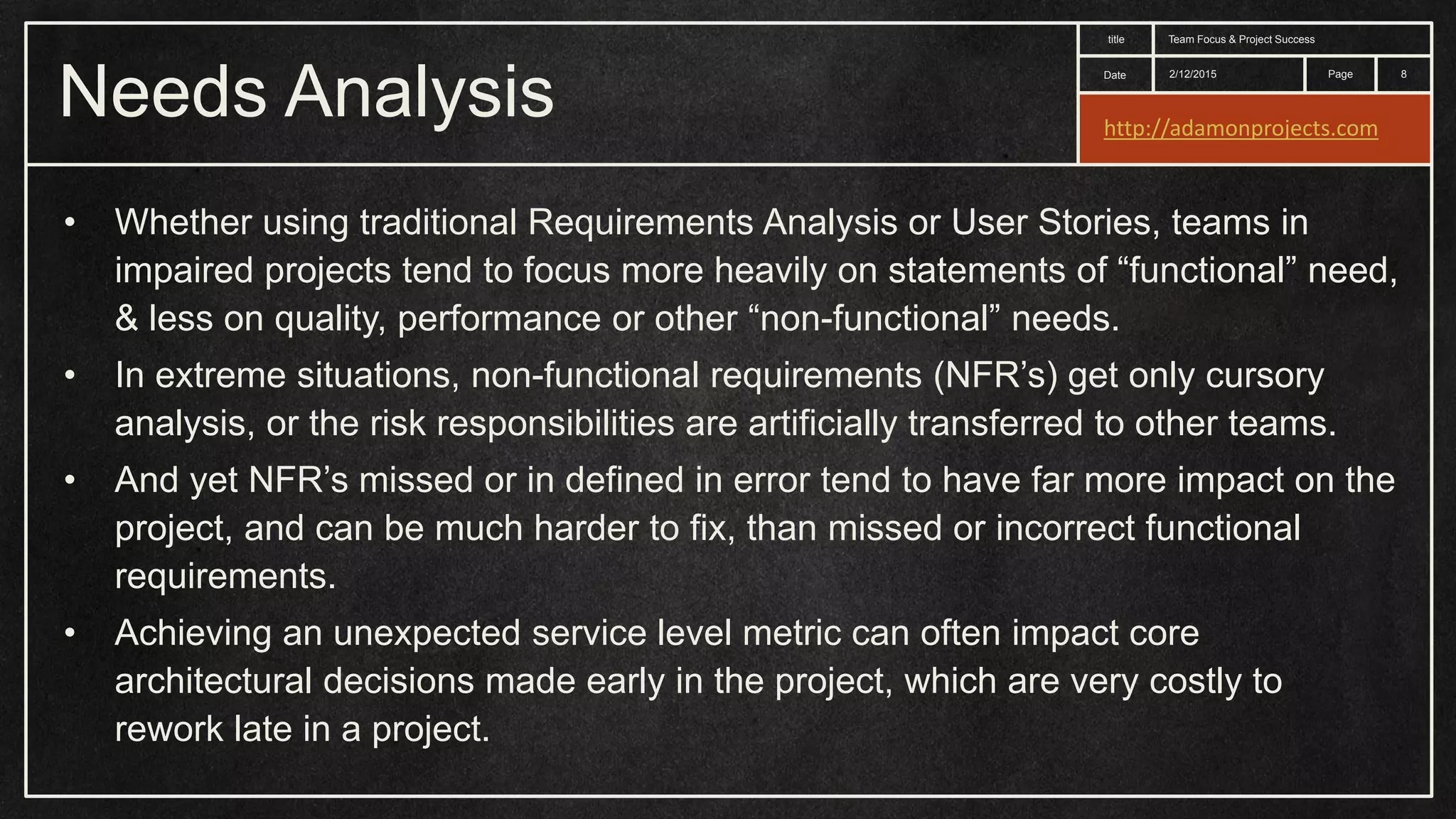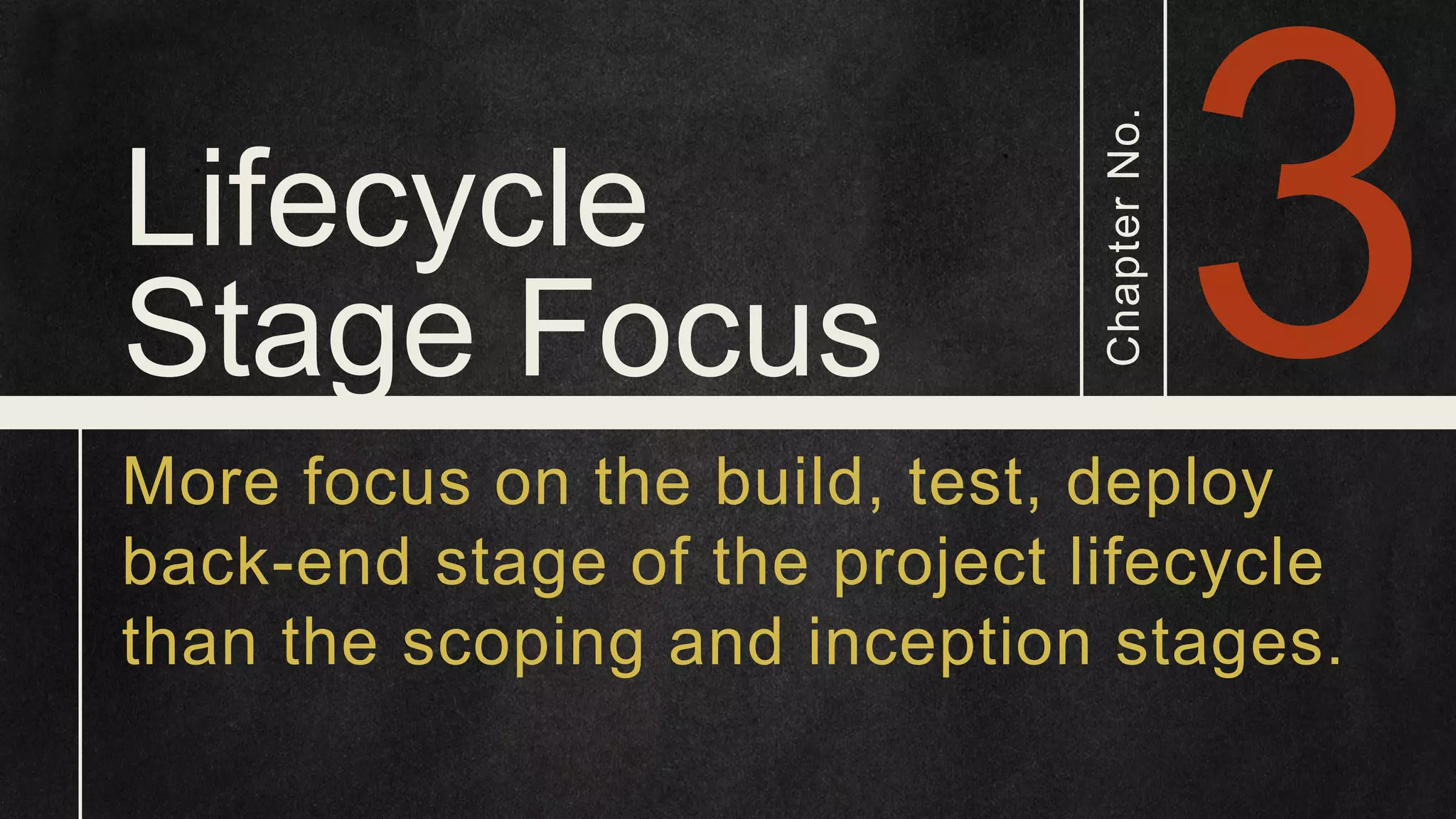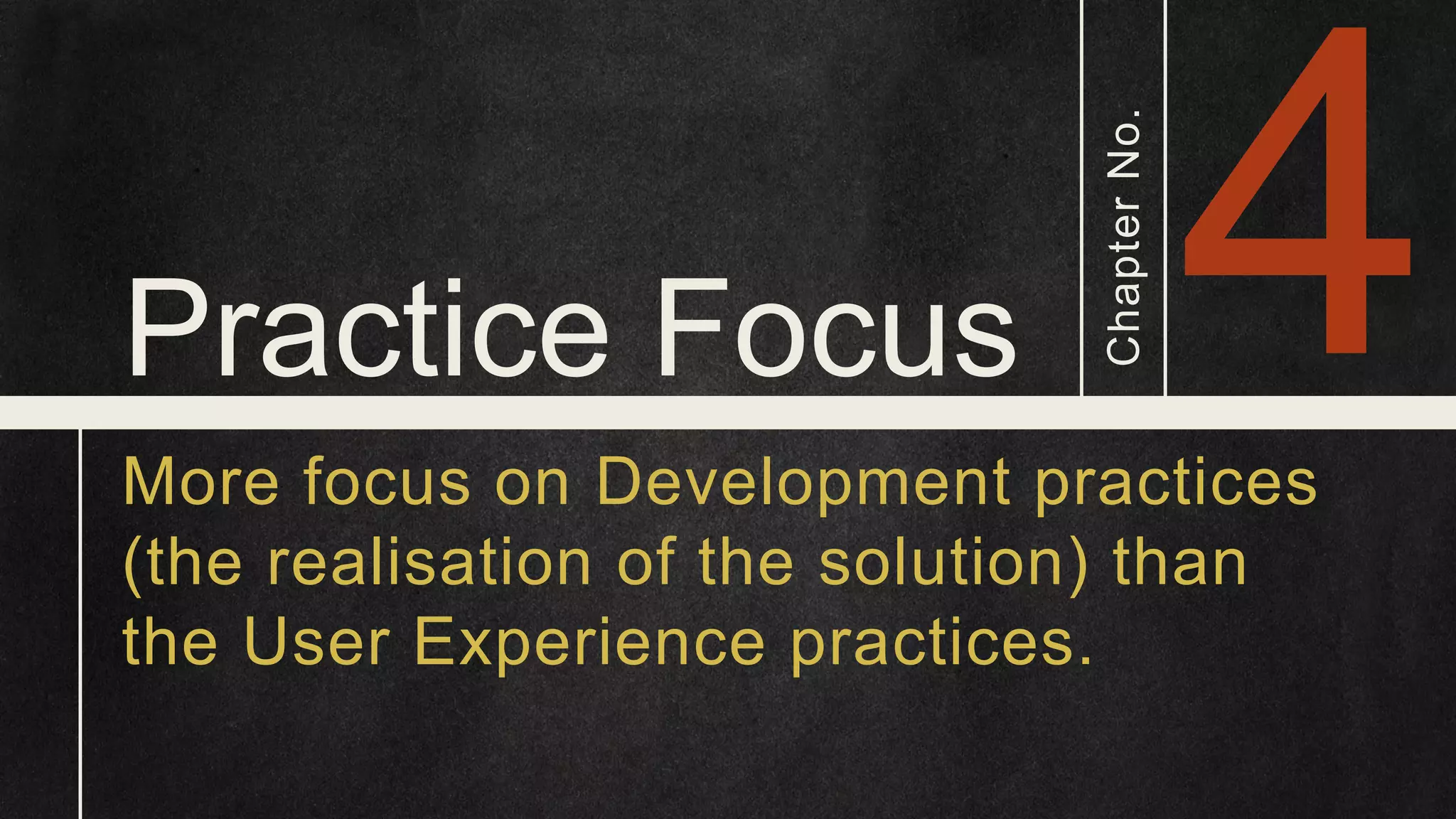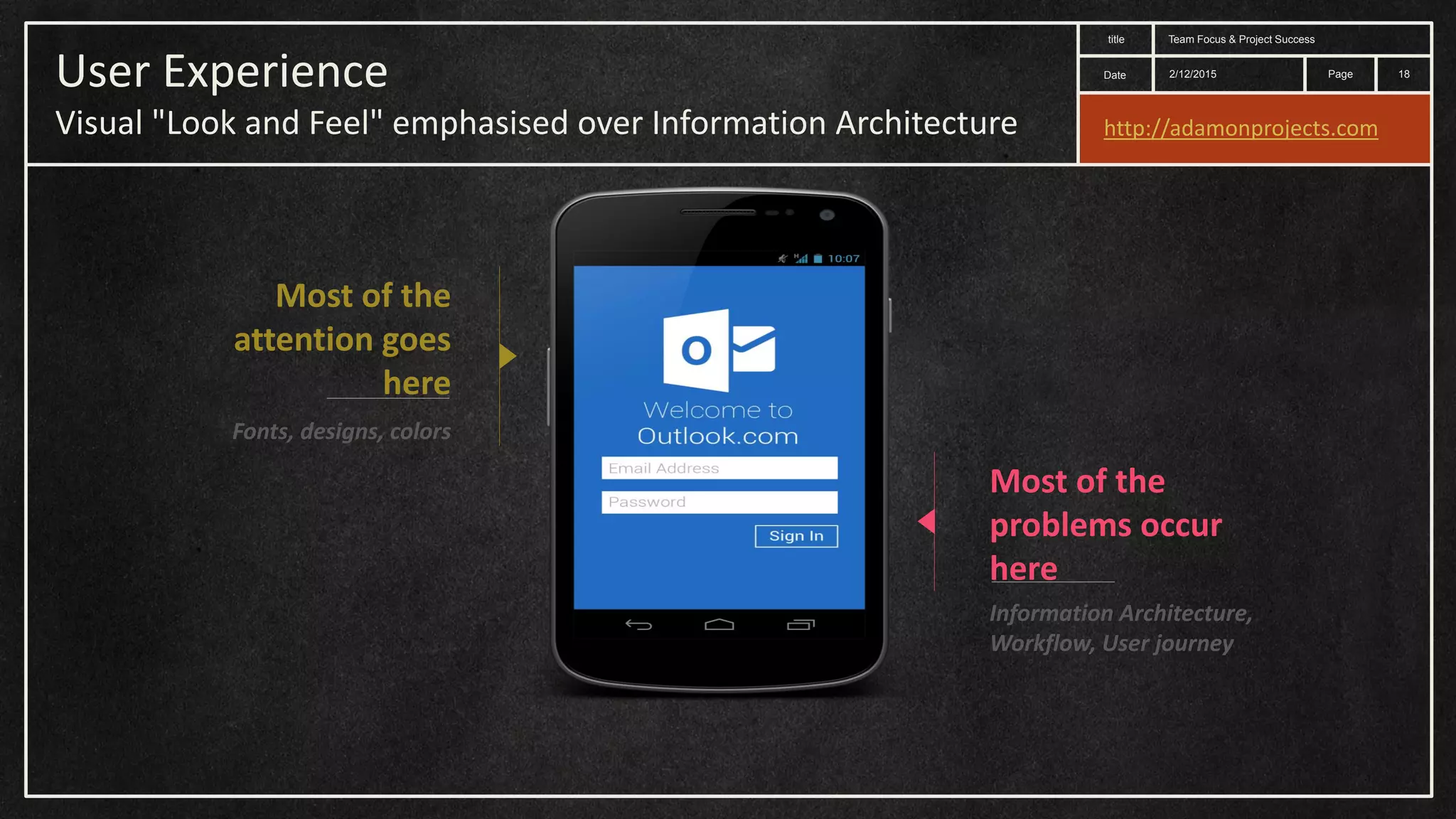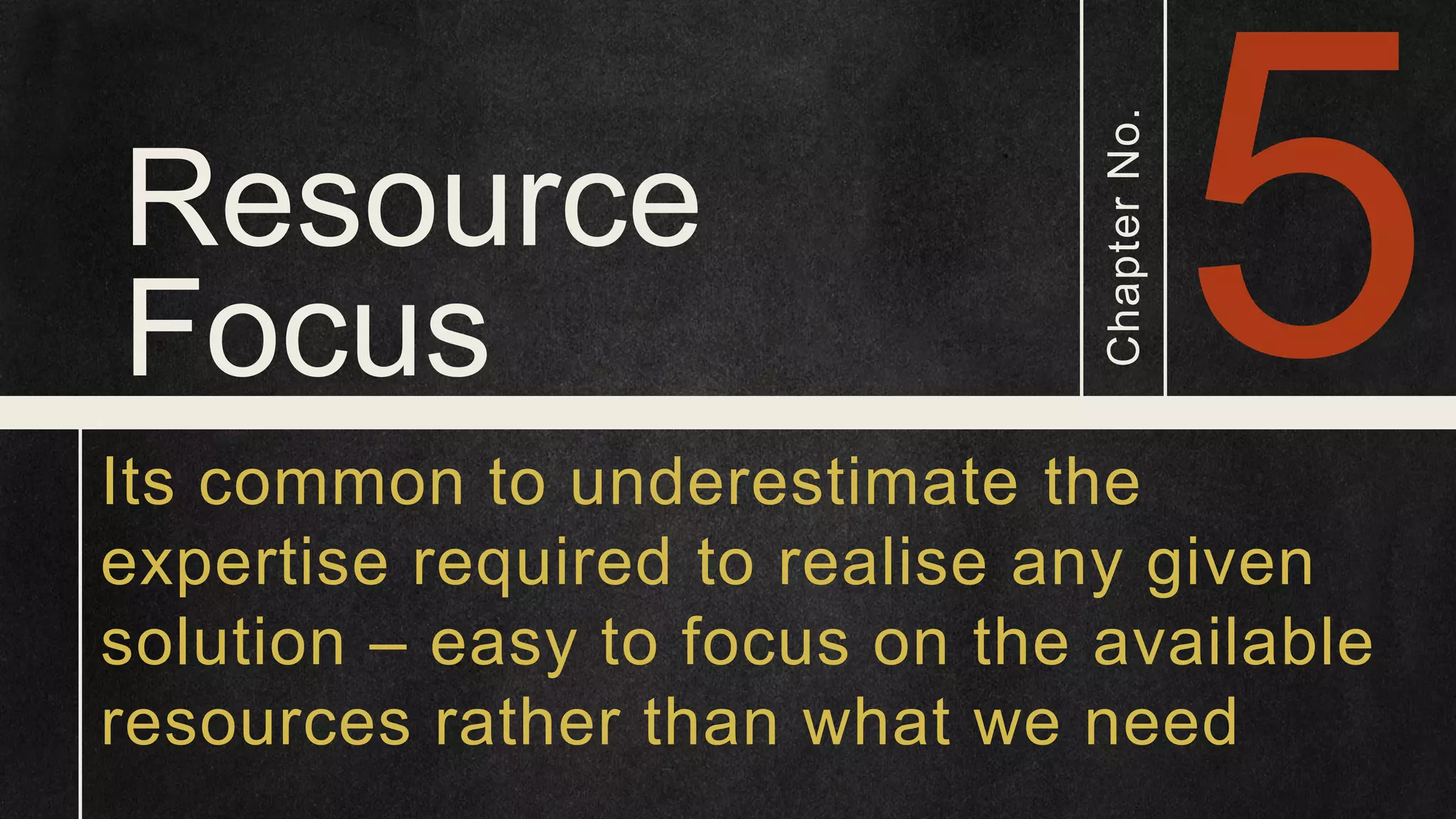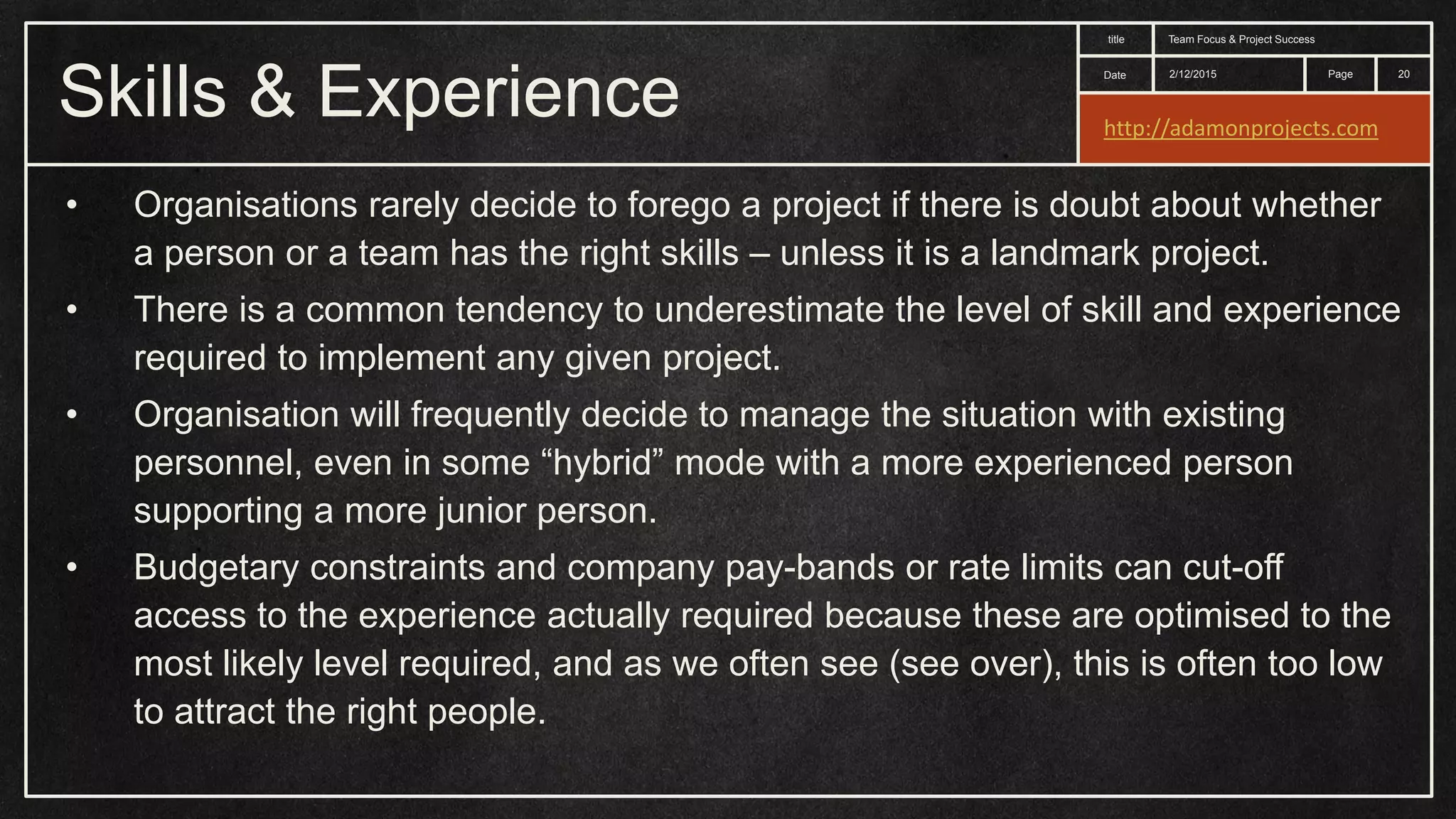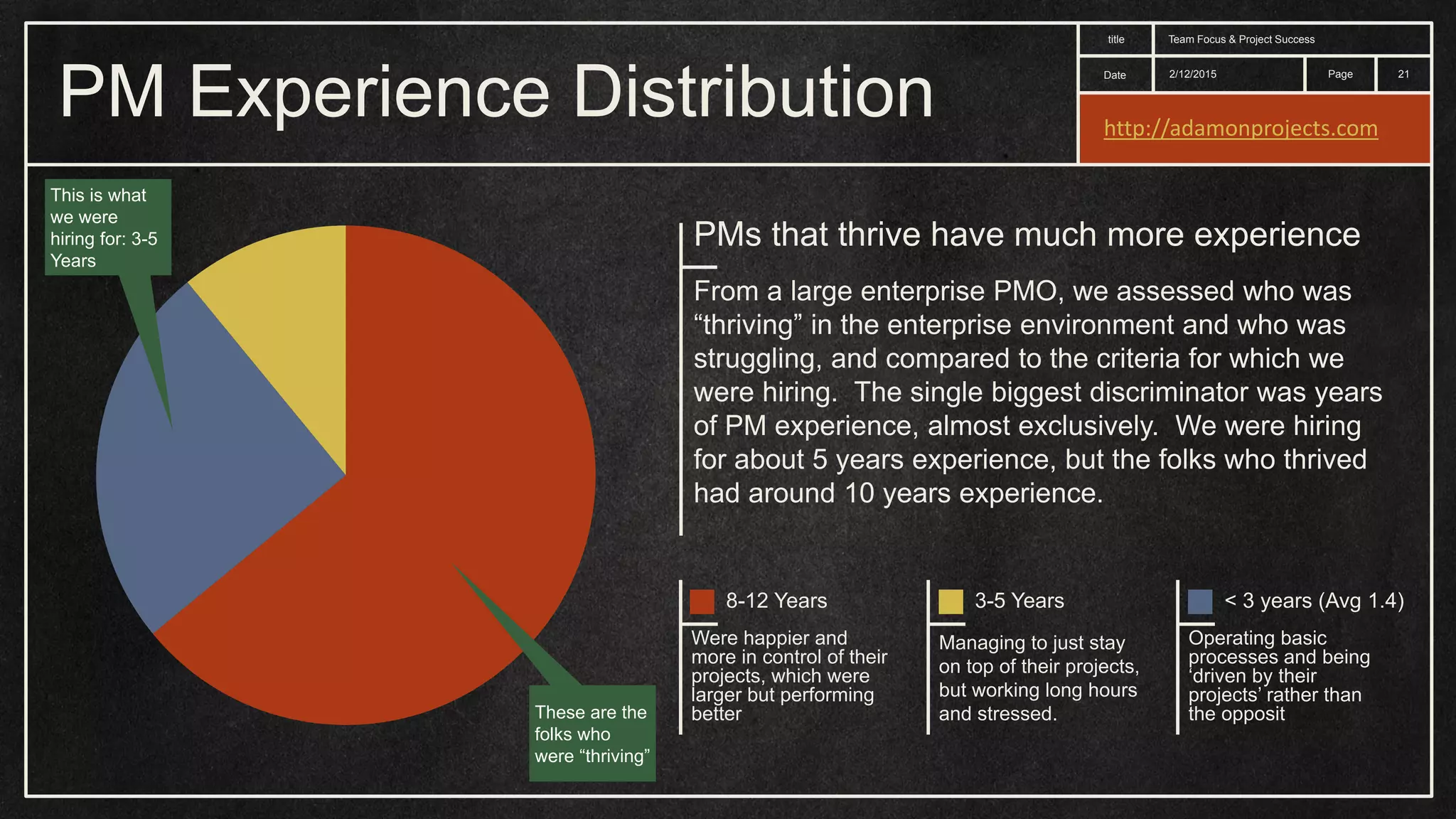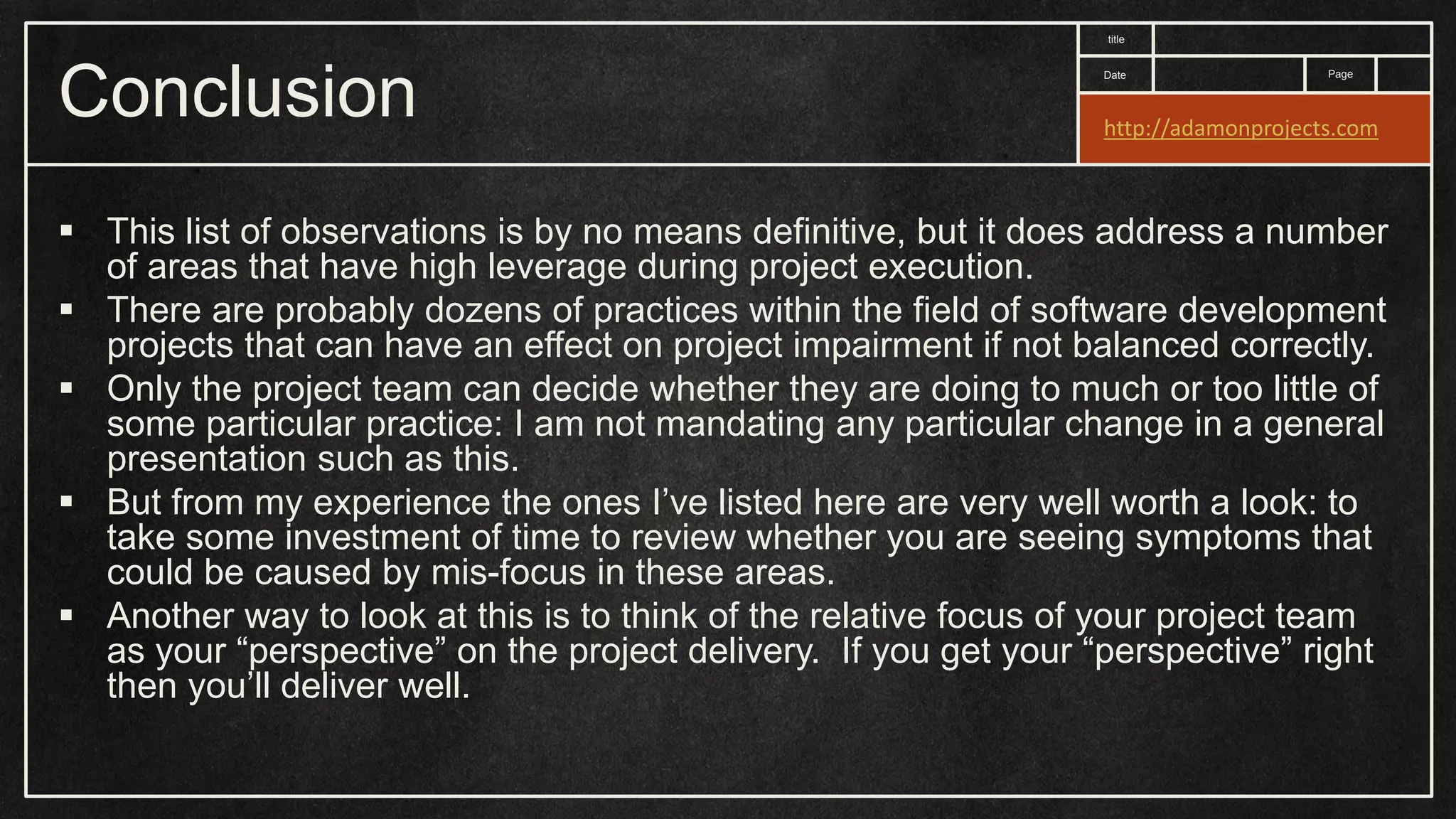The presentation by Adam Russell discusses common misfocuses in software development projects that lead to errors and underperformance, despite advancements in tools and methodologies. It identifies five key areas where teams tend to allocate their attention incorrectly, emphasizing the importance of focusing on interfaces, non-functional requirements, early project stages, user experience, and the need for expertise. Russell concludes by encouraging project teams to reassess their focus to improve project outcomes.
